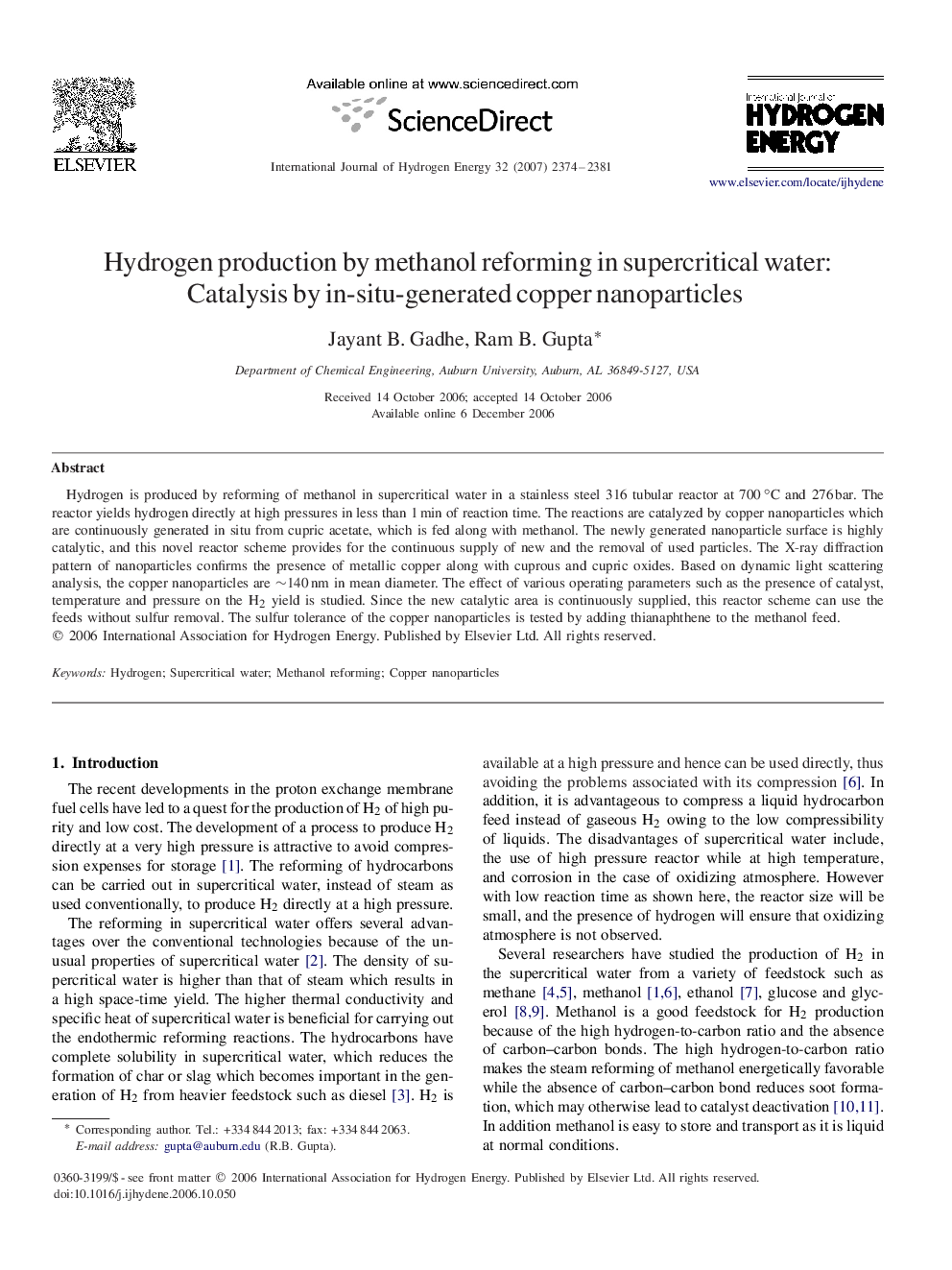| Article ID | Journal | Published Year | Pages | File Type |
|---|---|---|---|---|
| 1280341 | International Journal of Hydrogen Energy | 2007 | 8 Pages |
Hydrogen is produced by reforming of methanol in supercritical water in a stainless steel 316 tubular reactor at 700∘C and 276 bar. The reactor yields hydrogen directly at high pressures in less than 1 min of reaction time. The reactions are catalyzed by copper nanoparticles which are continuously generated in situ from cupric acetate, which is fed along with methanol. The newly generated nanoparticle surface is highly catalytic, and this novel reactor scheme provides for the continuous supply of new and the removal of used particles. The X-ray diffraction pattern of nanoparticles confirms the presence of metallic copper along with cuprous and cupric oxides. Based on dynamic light scattering analysis, the copper nanoparticles are ∼140nm in mean diameter. The effect of various operating parameters such as the presence of catalyst, temperature and pressure on the H2 yield is studied. Since the new catalytic area is continuously supplied, this reactor scheme can use the feeds without sulfur removal. The sulfur tolerance of the copper nanoparticles is tested by adding thianaphthene to the methanol feed.
